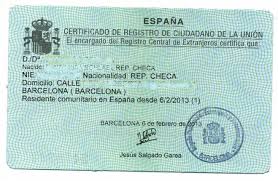SINCE the advent of popular instant messenger services, it is becoming increasingly frequent to hear – in a legal conversation typically – that someone has irrefutable evidence in the form of ‘WhatsApps’ to build a solid court case.

And often, this someone will grab his phone with two fingers and proclaim, in a pseudo-ceremonial manner: “IT’S ALL HERE!”
Life is full of surprises as we know, and the law is no exception.
The typical street lawyer would have probably overheard the same nonsense and, just by conversational repetition – as with the infamous 11-month rental contract – imagined it had made it all the way into the Spanish Civil Code.

The reality is more complex. For WhatsApps to be admissible evidence in a court of law the bearer of those messages will have to go through a verification process that’s challenging to say the least.
For the avoidance of doubt, a screenshot will not be acceptable unless the sender confirms he/she sent it (wishful thinking most of the time).
So, what’s the law and case law saying in these situations?
- According to WhatsApp Inc., […] the contents of any delivered messages are not kept or retained by WhatsApp – the only records of the content of any delivered messages reside directly on the sender’s and recipient’s mobile devices (and may be deleted at the user’s option). This rules out a business records affidavit from the service provider.
- The Spanish Supreme Court, aware of this limitation, established some guidelines in respect to the admissibility of a WhatsApp conversation in a court of law and, with the only exception a full acknowledgement by both parties of that ‘chat’, ruled that ‘the possibility of manipulating digital files through which this exchange of ideas materialises is part of the reality of things…it’s perfectly possible to create a communication in which a single user writes to himself’.
- Case law has therefore established that for these types of messages to be admissible, the claimant will need to submit a technical expert report ‘confirming the true origin of that communication, the identity of the parties and, finally, the’ integrity of its content’. The defendant will in turn need to provide a counter report challenging it after which, based on this and all other evidence, judgement may be passed.
Click here to read more Antonio Flores: Legal Problems News from The Olive Press.








